| |||||
| Decades: | |||||
|---|---|---|---|---|---|
| See also: | |||||
Events in the year 1940 in Paraguay .
| |||||
| Decades: | |||||
|---|---|---|---|---|---|
| See also: | |||||
Events in the year 1940 in Paraguay .
| | This section needs expansion. You can help by adding to it. (May 2024) |
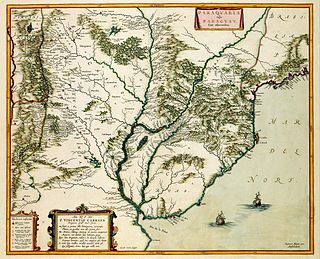
The history of Paraguay encompasses thousands of years of human habitation. Both agricultural and nomadic Guaycuruan lived in the region at the time of the Spanish Conquest. It became a relatively neglected part of the Spanish Empire due to its isolation and lack of mineral wealth, nonetheless a small group of Spanish settlers came to reside in the area, increasingly intermarrying with native women to produce a mestizo population. In the 17th and 18th centuries, Jesuit missionaries organized the natives into planned communities known as reducciones, and the experiment gained notable attention in Enlightenment Era Europe.
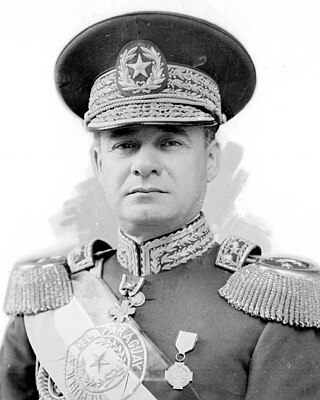
José Félix Estigarribia Insaurralde was a Paraguayan military officer and politician who served as the 34th President of Paraguay from 1939 until his death in a plane crash on September 7, 1940. He is most remembered for his previous role as commander in chief of the Paraguayan Army during the Chaco War, which resulted in an upset victory for Paraguay.

Higinio Nicolás Morínigo Martínez was a Paraguayan military officer and politician who served as the 35th president of Paraguay from 1940 to 1948, ruling as a military dictator.
The Paraguayan Civil War was a civil war in Paraguay that lasted from 7 March to 20 August 1947.
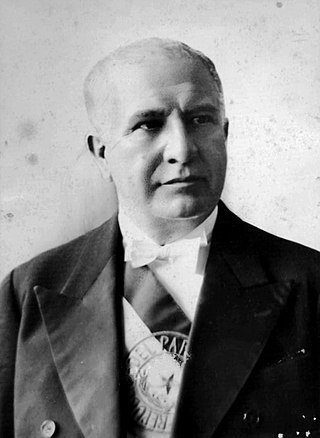
Eusebio Ayala Bordenave was a Paraguayan politician who served as the 28th President of Paraguay from 7 November 1921 to 12 April 1923 and again from 15 August 1932 to 17 February 1936.

José Patricio Guggiari Corniglione was a Paraguayan politician by the Partido Liberal Radical Auténtico.

Juan Natalicio González Paredes was a Paraguayan politician and poet who served as President of Paraguay from 15 August 1948 to 30 January 1949.
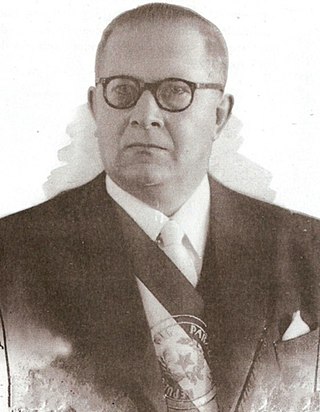
Felipe Benigno Molas López was 39th President of Paraguay from February 27, 1949 – September 10, 1949, when he resigned.
Hérib Campos Cervera (1905-1953) was a Paraguayan poet and writer.

Abaí is a district of Caazapá, Paraguay. It is the biggest district of the department and one of the country's biggest agricultural zones.
Efraím Cardozo (1906–1973) was a Paraguayan politician and historian.
Julio César Chaves was a Paraguayan historian. He had an important role in the Chaco War as a disseminator of information and propaganda, and was also a professor, diplomat and politician.
Below is the timeline of Paraguayan history.

In the Hell of Chaco is an Argentine black-and-white, silent documentary directed and filmed by Roque Funes from his own script. It premiered on 21 December 1932.
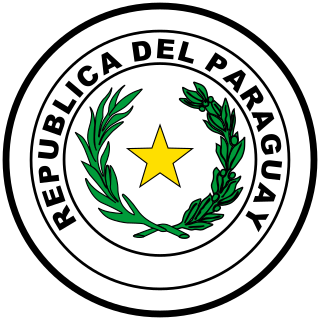
This is a list of foreign ministers of Paraguay from 1846 to the present day.
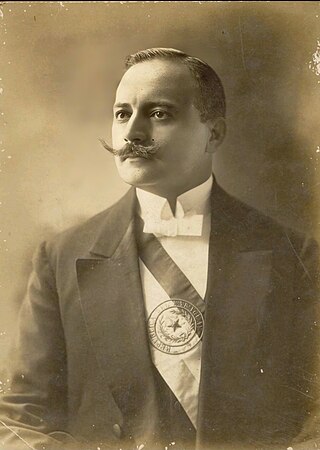
La Tribuna was one of the most important daily newspapers in Paraguay's history. It was founded in 1925 in Asunción by Eduardo Schaerer, and was the country's leading newspaper for five decades. La Tribuna was the first Paraguayan paper to be widely published across the country. Politically, La Tribuna was positioned between liberalism and traditional national politics. It opposed especially the dictatorial regimes of Higinio Morínigo and Alfredo Stroessner. During these dictatorial regimes, the editors became the target of persecution. Their crusade in favor of the Free Press in Paraguay gained attention abroad. In 1953, the newspaper's director, Arturo Schaerer, received the María Moors Cabot Prize from Columbia University.
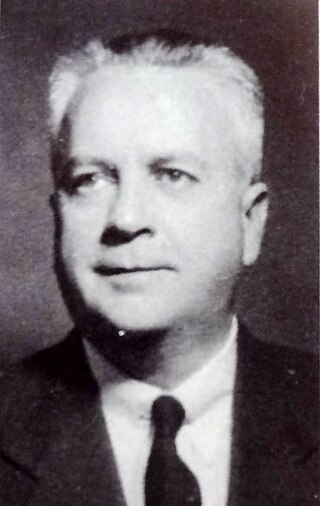
Arturo Oscar Schaerer Heisecke was a Paraguayan businessman, publisher and journalist. He was the son of the 25. President of Paraguay, Eduardo Schaerer and grandson of Swiss colonizer Santiago Schaerer.

The February Revolution in Paraguay was a military coup d'état on February 17, 1936, that brought to power colonel Rafael Franco. The revolution marked the end of Liberal Party rule in Paraguay and started the ascendancy of military dictatorships that lasted for more than half a century.

Carmen Casco de Lara Castro was a Paraguayan teacher, women's and human rights advocate, and politician. She established one of the first independent human rights organizations in Latin America and fought for both women's equality and an end to state-sponsored terrorism under the dictatorship of Alfredo Stroessner. She was influential in passing legislation for pay equity and maternity rights, as well as securing the repeal of laws curtailing basic human rights.